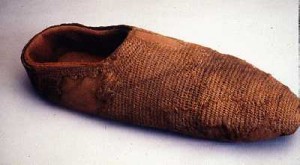I got turned onto wool for outdoor socks from what my brothers had told me and what I learned studying the Vikings. For thousands of years wool has been used by people for socks, pants, and leg wraps. Today, many of our best survival socks are total or part wool blends. One of the reasons the ancients loved this material is because it would get warm if the feet became damp or wet. While it is best to keep your feet dry, early shoes sucked, especially if you lived in a cold climate; so this could save your life in a pinch. Anyway, I got curious why wool acted this way and did a little research; what can I say, I love learning new stuff.
Wool will soak up a lot of moisture from your own body or the environment and not generally feel wet. In other words wool is a hygroscopic insulator. The natural crimp in the fiber of wool makes each strand but up against each other, as opposed to other fabrics and materials that line up side by side or laying down flat together. This keeps tiny air pockets intact and acting as little insulators not unlike styrofoam. The result is a very efficient heating and cooling system. Just like your fancy oven air has the ability to move heat by convection; moving and circulating.
The wool fibers that naturally align are also made up of cortical cells which are individually wrapped in cuticle. This scaly outer layer is then covered by another layer called the apicuticle, a filmy skin that helps repel moisture. The epicuticle comes into play when exposed to humidity or moisture because it has tiny pores that draw in the moisture vapor to the center of the fiber where a chemical process absorbs the water vapor. The hydrogen bond of water, H2O, is actually broken, creating a chemical reaction with the wool fiber molecules to generate heat when it has taken on a lot of moisture; but because the air pockets allow moisture to evaporate from your skin, you won’t overheat when you sweat.
So in summary, wool takes in moisture and then evaporates it; and will help warm your feet, but won’t let you overheat. I’ve been in the mountains in boots that have gotten soaked, and while my feet have often become saturated, they’ve stayed relatively warm and comfortable. If you haven’t tried them out in cold weather then do. For summer however, I still prefer good old cotton. And if you don’t like pure wool consider a blend like I have in our bug-out-bags.
Jon
If you are curious, that old looking sock is actually a 10th century woollen sock from Coppergate done in a fine knit weave.
Most of the info came from: How stuff works, How does wool keep you warm even when it’s wet?



Leave a Reply